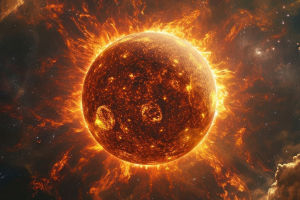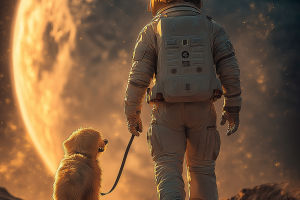A telescope is a tool used by astronomers to observe distant objects.
Most modern telescopes, especially large ones, use curved mirrors to gather and focus light from the night sky.
The Evolution of Telescope Optics
The Early Days: Lenses
The first telescopes used lenses, which are pieces of curved, clear glass, to focus light.
Why Mirrors Are Used Today
Mirrors are preferred over lenses because they are lighter and easier to make perfectly smooth. This makes them ideal for creating powerful telescopes that can observe very dim or faraway objects.
The Importance of Optics
The lenses or mirrors in a telescope are called "optics." To gather more light and create clear images, the optics need to be large and nearly perfect. Imperfections such as spots or scratches can warp or blur the image, making it difficult to observe celestial objects.
Lenses in Telescopes
Refracting Telescopes
Telescopes that use lenses are called refracting telescopes. Lenses bend light as it passes through them, making faraway objects appear closer.
Challenges of Using Lenses
To see distant objects, telescopes require large, thick lenses. However, thick lenses are heavy and can block some light. Additionally, the surface of the lens must be extremely smooth; any flaws can distort the image, much like looking through a dirty window.
Why Mirrors Are Better
Reflecting Telescopes
Telescopes that use mirrors are called reflecting telescopes. Mirrors concentrate light by bouncing it off their curved surfaces.
Advantages of Mirrors
Mirrors can be very thin, even when large, making them lighter than lenses.
It is easier to create large, near-perfect mirrors compared to lenses.
Mirrors are easier to clean and polish since they are one-sided.
Challenges with Mirrors
Dear Lykkers! Curved mirrors, like the surface of a spoon, flip images upside down. This issue is resolved by using additional mirrors to correct the orientation.
Space Telescopes and Their Achievements
Lightweight Design for Space
Mirrors' lightweight design makes them ideal for space telescopes, which need to be launched into space.
Notable Space Telescopes
The Hubble Space Telescope and the Spitzer Space Telescope have captured breathtaking images of galaxies and nebulas beyond the solar system.
The James Webb Space Telescope, launched in December 2021, is the largest and most powerful space telescope ever built. It enables scientists to study the universe as it existed around 200 million years after the Big-Bang.


